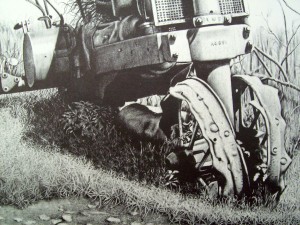Be sure to sign up for the Art Center Information newsletter and enter the drawing to win a free coffee table art book.>>>
“Make your lights light and your darks dark when they are placed next to each other.”~Howard Pyle
I feel every artist will agree that understanding value and the relationship between light and dark is very important; you might even say it is crucial. As artists, we are always aware of ever present shadows gently massaging light as it defines form. Observing directions and angles of light along with the directions and angles of cast shadows helps us draw or paint objects more accurately.
We have to determine a value range before drawing or painting a picture with any sense of reality. When we make or buy a value scale, the lightest white is given a value of 10 and the darkest black is given a value of 1. You may elect to do your drawing or painting in any of these value ranges. For example, you may select to have your darkest value a 4 and your lightest value an 8.
When I recently went on vacation to visit my daughter and talked with her father-in-law, artist, James Frederick, I couldn’t help but be very attracted to his graphite drawings. I told him I was naturally attracted to his value range to keep his lights against his darks so crisp and conflicting yet subtle in areas they should be, while showing forms with such detail using shadows against light.

James is rather modest when it comes to his artwork, never totally accepting the fact that his talent is unusual or different from any other persons. I said person not artist. I think James feels anybody can do what he does.
When I talked with him about his natural understanding and use of value I could tell he didn’t see anything special about it. I didn’t belabor the discussion, nor did he try to add to or take away from it. I did, however, notice a twinkle in his eye that told me that he understood that I knew the great labor he’d gone through to create the work.

